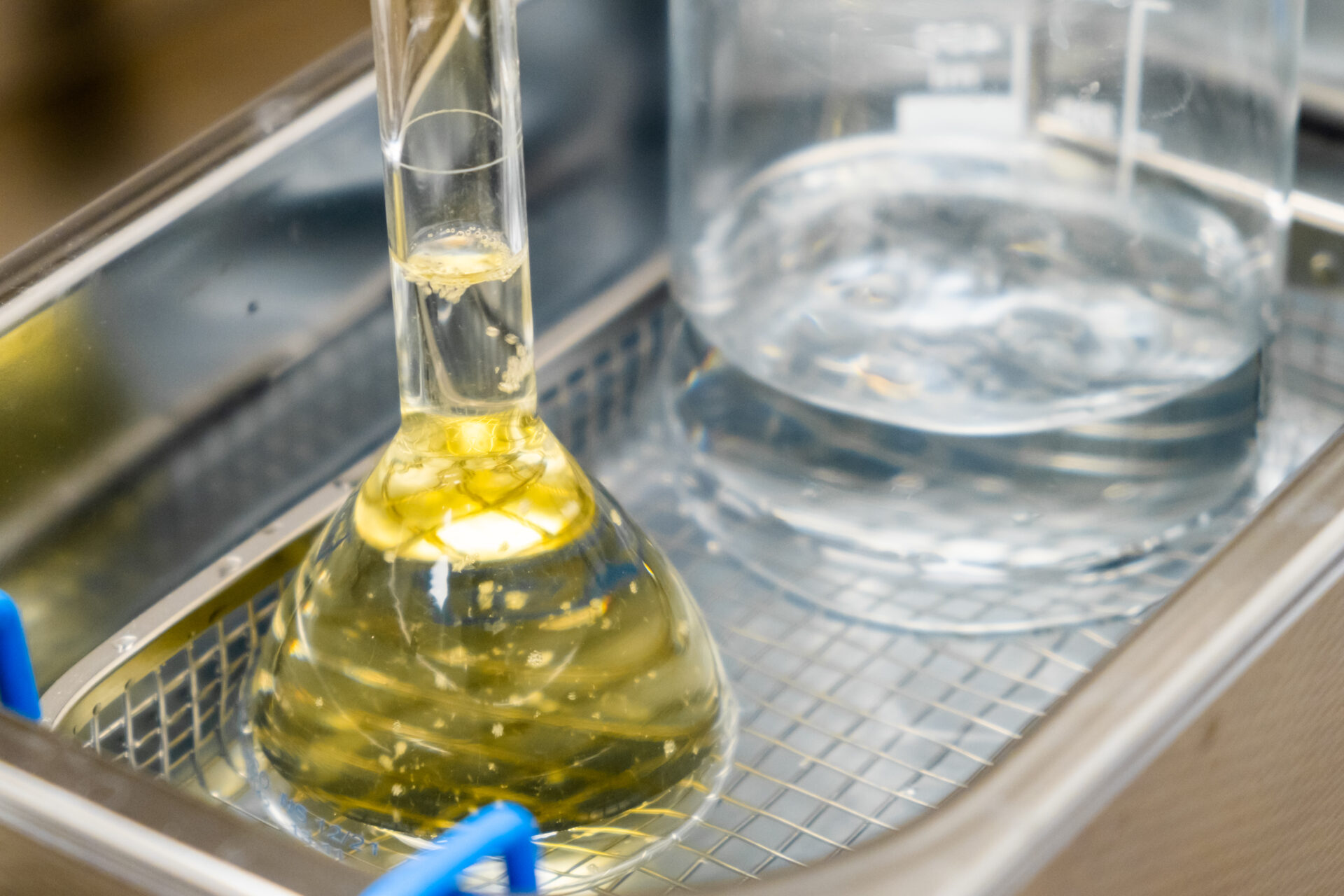The synthesis of oxidized ethers 3β,3’β-disteryl and the search after high-temperature treatment of sterol-rich samples.
It has been demonstrated that sterols subjected to high-temperature treatment may undergo concatenation, leading to the formation of polymeric structures, such as 3β,3’β-disteryl ethers. However, it has also been demonstrated that as a result of elevated temperature in conditions containing oxygen, sterols may undergo various oxidation reactions. This study aimed to prove the existence and conduct a quantitative analysis of oxidized 3β,3’β-disteryl ethers that may form during high-temperature treatment of sterol-rich samples. The samples were heated at temperatures of 180, 200, and 220 °C for 0.5 to 4 hours. Quantitative analysis of oxidized 3β,3’β-disteryl ethers was performed using liquid-liquid extraction, solid-phase extraction, and liquid chromatography combined with mass spectrometry.
Additionally, to conduct this analysis, appropriate standards for all oxidized 3β,3’β-disteryl ethers were prepared. Eighteen different oxidized 3β,3’β-disteryl ethers were obtained (derivatives of 3β,3’β-dicholesteryl ether, 3β,3’β-disitosteryl ether, and 3β,3’β-distigmasteryl ether). Furthermore, the influence of metal compounds on the mechanism of ether formation at high temperatures was investigated.

Oxysterols and oxyphytosterols:
It has already been proven that oxysterols and oxyphytosterols are formed as a result of the oxidation of sterol molecules and have various functions or interactions in the human body. The aspect of oxidized sterol molecules and their association with diseases such as atherosclerosis has already been investigated and discussed. Various reactions of sterol molecules during high-temperature processing lead not only to the formation of oxysterols but also to the formation of sterol polymers. Struijs et al. demonstrated the formation of stigmasterol polymers after heating to 180°C. Based on the molecular weight obtained using high-resolution mass spectrometry (HRMS), one of the identified dimers suggested that it consists of two stigmasterol fragments connected by ether bonds, which could correspond to the structure of 3β,3’β-distigmasteryl ether.

Similar study:
Similar studies were also conducted by Sosińska et al. using heated samples of β-sitosterol. Available data indicated that 3β,3’β-disteryl ether was the most abundant compound in the non-polar fraction, while 7-keto 3β,3’β-disteryl ether was the main dimer in the medium-polar fraction. 7-hydroxy 3β,3’β-disteryl ether was identified as a prominent component of dimers in complex polar phytosterol degradation products. 7-ketosterol-sterol ethers have also been synthesized recently; however, there was no confirmation of their presence after sterol heat treatment.
Study result:
The formation of 3β,3’β-disteryl ethers was initially achieved by reacting sterols with the MK10 catalyst in CH2Cl2. After obtaining the 3β,3’β-disteryl ethers, they were directly oxidized by the chromium oxide/3,5-dimethylpyrazole complex in CH2Cl2, yielding 7-ketosteryl-sterol ethers. However, our previous study on the ether formation reaction mechanism showed that 7-ketosteryl-sterol ethers could also be obtained by reacting sterols with 7-ketosterol in the presence of MK10 in CH2Cl2. To obtain 7-ketosterols, the hydroxyl groups of natural sterols were first protected as acetals, and the remainder of the sterols underwent oxidation by the chromium oxide/3,5-dimethylpyrazole complex in CH2Cl2, yielding 7-ketosteroid derivatives 25, 26, and 27. At this stage, deprotection reaction in an alkaline medium easily led to the formation of 7-ketosterols. The reaction of the obtained 7-ketosterols and natural sterols in CH2Cl2 with the MK10 catalyst resulted in the formation of 7-ketosteryl-sterol ethers. Double 7-keto 3β,3’β-disteryl ethers were synthesized by increasing the molecular ratio of the chromium oxide/3,5-dimethylpyrazole complex in the oxidation of 3β,3’β-disteryl ethers. Doubly oxidized 3β,3’β-disteryl ethers could not be obtained by the reaction of 7-ketosterol with MK10. Most likely, the addition of the 7-keto group inhibited the formation of the intermediate i-steroid ion, which is required for ether bond formation. The prepared 7-ketosteryl-sterol ethers were then subjected to reduction using sodium borohydride or L-selectride, yielding 7-hydroxysteryl-sterol ether in α- or β- form. Epoxy derivatives were obtained using mCPBA or synthesized Cu(MnO4)2, as previously, yielding 5,6α-epoxy steryl-sterol ethers and 5,6β-epoxy steryl-sterol ethers.

Conclusions:
The very low polarity of 3β,3’β-disteryl ethers and oxidized 3β,3’β-disteryl ethers requires a different approach to analysis using chromatography and mass spectrometry. Therefore, based on our previously described GC-MS method, which demonstrated that the analysis of 3β,3’β-disteryl ethers is feasible using gas chromatography, an attempt was made to apply this technique. However, the addition of oxygen to the sterol structure increased the boiling point of the synthesized compounds, which, in the case of 3β,3’β-disteryl ether, necessitated the use of appropriate high-temperature chromatography.
Similar Articles

Learn more about our ongoing projects and the range of services we offer.
Get in touch with us


 Read the article
Read the article
 Read the article
Read the article
 Read the article
Read the article